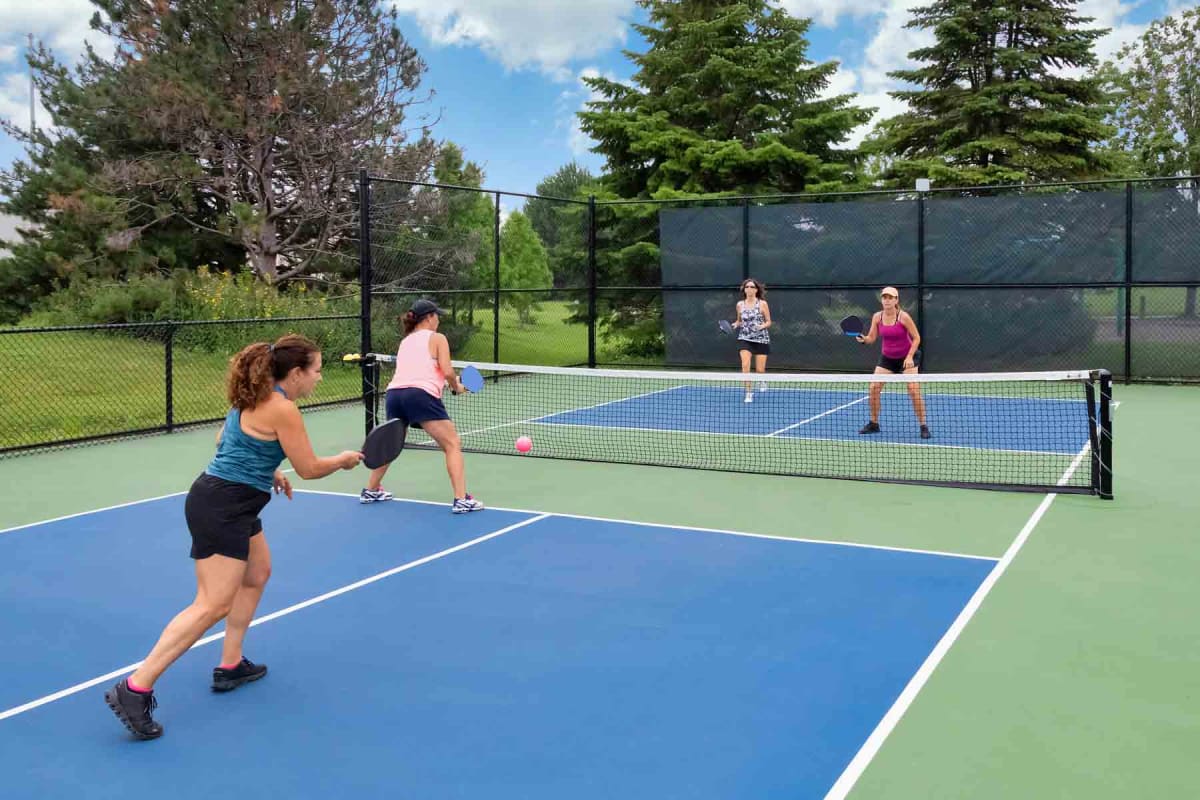Building a Pickleball Court Construction-- Professional Construction for Quality Play
Building a Pickleball Court Construction-- Professional Construction for Quality Play
Blog Article
Sustainable Practices in Pickleball Court Building You Must Know
As the popularity of pickleball continues to increase, so also does the need for sustainable techniques in court building and construction. The influence of these methods extends far past the court itself.
Selecting Eco-Friendly Materials
Choosing eco-friendly products is an essential action in the building of sustainable pickleball courts. The option of sustainable products not just lessens ecological impact yet likewise enhances the longevity and efficiency of the court. Trick products consist of reused rubber for the surface area, which uses outstanding toughness and shock absorption while diverting waste from garbage dumps.
In addition, making use of in your area sourced materials reduces transportation discharges and supports regional economic climates. Pickleball court construction. For instance, utilizing indigenous hardwoods for fence and seats can supply a sustainable visual while ensuring durability versus the elements.
Integrating absorptive products for court foundations can even more add to sustainability by permitting all-natural water drain and lowering overflow. These selections not just protect regional environments but likewise advertise much healthier play atmospheres.
Efficient Drain Solutions
While the option of green products is vital, executing reliable water drainage services is just as important for preserving lasting pickleball courts. Correct water drainage not just protects the court surface from water damages however also decreases disintegration and runoff, promoting ecological stability.
Reliable water drainage systems can consist of absorptive paving, which permits water to penetrate the ground instead of merging externally. This lowers the possibility of standing water, which can cause mold and other maintenance issues. Additionally, incorporating strategically placed drainage channels and swales can route excess water far from the court area, guaranteeing a dry having fun surface and avoiding dirt erosion.
Making use of native greenery in the landscape design around the courts can additionally enhance water drainage by soaking up excess water and minimizing runoff. These plants call for much less irrigation and promote biodiversity, lining up with lasting methods.
Furthermore, it is important to consistently preserve the water drainage system to ensure its long-lasting performance. This includes clearing up debris and tracking for clogs. By prioritizing effective drainage services, pickleball court contractors can significantly contribute to the sustainability and long life of the center, ultimately profiting both gamers and the atmosphere.
Energy-Efficient Lighting Options
As the need for pickleball remains to grow, integrating energy-efficient lights choices into court layout has actually come to be significantly vital for sustainability. Traditional illumination systems commonly eat too much energy, contributing to greater operational prices and environmental effect. Taking on contemporary, energy-efficient modern technologies is vital for both brand-new constructions and improvements.
LED (Light Emitting Diode) illumination attracts attention as a premier choice because of its longevity and power financial savings (Pickleball court construction). Compared to traditional illumination, LEDs utilize roughly 75% less energy and can last as much as 25 times much longer, considerably lowering maintenance costs. In addition, the directional nature of LED lights decreases light air pollution, guaranteeing that lighting is focused on the court as opposed to bordering locations.

Sustainable Surface Area Alternatives
Exploring lasting surface area alternatives for pickleball courts has gained traction amongst builders and gamers alike. The emphasis on green products not only straightens with the growing environmental understanding yet also boosts the performance and toughness of the courts.
One prominent option is making use of recycled rubber, which can be sourced from utilized tires. This product offers excellent shock absorption, minimizing the risk of injuries for gamers while advertising sustainability. Additionally, modular floor tiles made from recycled plastics supply one more practical choice. These tiles are very easy to set up and change, and their versatility permits numerous court setups.
All-natural turf courts are also becoming a sustainable selection, promoting biodiversity and minimizing the heat island effect. top article They require regular upkeep and water, which might not straighten with all sustainability goals.
Water Preservation Methods

An additional reliable strategy involves the installation of rain harvesting systems. These systems keep and gather rainwater for use click this link in maintaining court surfaces and landscaping. This method not just conserves potable water but additionally lowers dependence on community sources.
Moreover, employing drought-resistant landscaping around the courts is crucial. Native plants require much less water and are much better adjusted to neighborhood climate problems, hence lowering total water intake. Additionally, making use of effective watering systems, such as drip watering, ensures that water is provided directly to plant origins, reducing evaporation and waste.
Conclusion
Including sustainable methods in pickleball court building and construction significantly contributes to environmental conservation and resource effectiveness. Utilizing eco-friendly products, executing effective drainage options, and adopting energy-efficient lighting options can considerably minimize environmental influence. Furthermore, discovering sustainable surface alternatives and using water conservation techniques enhance the general sustainability of these entertainment facilities - Pickleball court construction. By prioritizing these techniques, the building of pickleball courts can align with broader ecological objectives while advertising durability and performance within areas.
As the appeal of pickleball continues to rise, so too does the need for lasting techniques in court building and construction.Selecting eco-friendly materials is an essential step in the building and construction of sustainable pickleball courts. By focusing on energy-efficient illumination options, pickleball court fabricators can contribute to an extra lasting future while satisfying the demands of players and stakeholders Visit This Link alike.Including sustainable surface area choices not just enhances the performance of pickleball courts however likewise leads the way for carrying out efficient water preservation techniques.Incorporating sustainable techniques in pickleball court construction substantially adds to environmental conservation and source efficiency.
Report this page